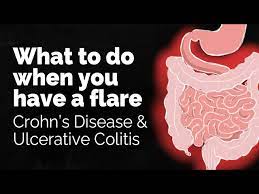Stem cell therapy has been making headlines, with many following this regenerative medicine excited about where this new branch of medicine is taking us. Celebrities are using it, sports stars have turned to it, and those with chronic conditions are absolutely interested. The only issue is that wider use of stem cell therapy isn’t yet available, meaning it needs to come out of pocket.
That’s why it’s so important that you go into your stem cell transplant with eyes wide open. Going in with a realistic understanding of how long stem cell therapy can take to work, as well as what benefits of stem cell therapy you are likely to see, can help you decide whether this treatment is right for you.
How long does it take for stem cell therapy to work, you may ask? Let’s get into it:
Understanding Stem Cells
In order to understand how long a stem cell transplant takes to work, you first need to understand what it is. So, what are stem cells?
Stem cells are precursor cells. This means that they can become other cells when the time calls for it. If a blood cell dies, for example, a blood stem cell can step up to the plate and take its place.
There are different stages of the stem cell evolution. The very first stem cells we have come as embryos, which is why they’re known as embryonic stem cells. They can become absolutely any cell in the body, but they are difficult to access because they’re only available if someone donates their fertilized eggs from IVF. That’s why embryonic cells are only ever used in research and during a clinical trial.
The good news is that scientists are also working on induced pluripotent cells, meaning we can now reprogram adult cells into an embryonic state. This method currently is prohibitively expensive, of course, but there is hope for the future.
Now, as to what are stem cell injections, the answer is simple. Stem cell transplants are made from adult cells. These cells are screened, purified, and then safely stored until you, the patient, need them.
They can be injected directly, for example, if you have joint pain, or can be administered via an IV if you need all-around treatment.
What are the Benefits of Stem Cell Therapy?
There are many benefits of this regenerative medicine. By injecting extra stem cells into the body, we can give your system more of the cells it needs to replace damaged or sick cells in your current system. It can help repair tendon damage and joint pain. Can help reduce inflammation. In some clinical studies, there has even been results that show that stem cells can reverse vision loss by helping replace damaged retinal cells.
The potential of this treatment are huge. Not only that, but the side effect is minimal. For most patients, the worst thing that could potentially happen is their body rejects those new cells. In terms of their health, nothing changes, but since the stem cell therapy cost can be high for many, it can hurt your wallet.
Before you worry that stem cell treatment is bound to fail, don’t worry. Here at Bioxcellerator we use cells sourced from Wharton’s Jelly, which is notable as it lacks a specific surface protein your immune system typically targets. Without that protein, your body is much more likely to accept and use the new cells.
How Long Does Stem Cell Therapy Take to Work?
Stem cell treatments do work, but they do not work immediately. Your body must first:
- Accept the new cells
- Start telling those new cells what to become
- Change the cells
- Use the new cells
This can take time. It also won’t usually happen all at once. There is also no set timeline.
This is because there are many factors that come into play like:
- Your current health
- Personal recovery speed
- Your diet
- Environmental factors
- The condition you have
- And more
If you suffer from inflammation throughout your body, for example, your system might use the stem cells to deal with that, before it deals with your joint pain.
That’s why the answer to how long does stem cell therapy take to work is a range, not a specific timeframe.
You may notice changes in your condition just one month after the treatment. Others after three or more. Remembering that “success” looks different from patient to patient is also important. Sometimes success can be defined as:
- Pain reduction
- Improved mobility
- Few blood transfusions
- Faster injury recovery
Sometimes stem cell treatment is a one-and-done deal. Those with a blood condition like leukemia can have a blood stem cell transplant (commonly known as a bone marrow transplant) and go into remission after treatment for the rest of their lives. Those with chronic or degenerative conditions will likely need more than one treatment in order to continue to enjoy the benefits of stem cell therapy.
We Keep an Eye on Every Patient
When you book a stem cell treatment with us, we take you through everything that you need to know about the treatment, side effects, and outcomes. We help you understand how long does stem cell treatment take on average amongst patients with your condition. We walk you through the changes you may experience. We even run a full consultation and will only take you on as a patient if we believe there’s a good chance of success.
Then, after the treatment, we even check in on you. This follow up is for our own records, yes, but it’s part of our commitment to you, too.
If you want to learn more about how stem cell treatment could work for you and your condition, then see what locations we cover, and get in touch with our expert team. We strive to offer the best in stem cell therapy for our patients, and are always here to answer questions.


